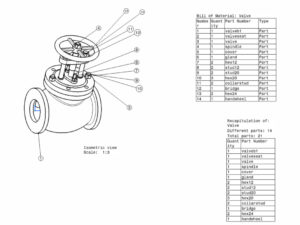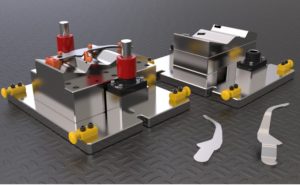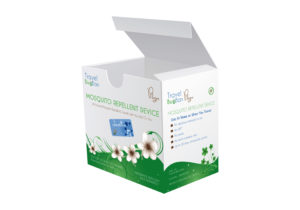So, you’re ready to turn the design you’ve been working on into a full-fledged marketable product. Many entrepreneurs get to this step and lose steam, usually because they didn’t consider just how many manufacturing costs there are.
Because it’s so easy to create a prototype with the use of 3D printers, many people get excited and push forward without planning for the long term. You want to make money with your product, but unfortunately, it takes a huge investment to get a sizable inventory ready to sell. Finding out just how much it’ll cost to flip your prototype into a manufactured, ready-to-go item will put you ahead of many entrepreneurs out there.
Manufacturers have a lot of things they need to pay for with the money you’re giving them. It would be unwise of you to believe that you’re simply paying for the parts. Consider that you also have to pay for labor, as someone has to put in the legwork. You’re paying for the manufacturer’s overhead, which includes their operating costs like rent and utilities. And they’re also factoring in their incidental expenses when charging you—that is, supplies they use while working.
But like I said, you’re setting yourself up for success if you’re reading this before looking for manufacturers. Here are seven things to keep in mind when mapping out your manufacturing budget.
Bill of Materials
A Bill of Materials (BOM) is a list of the materials needed to create a single unit of your product. Depending on the complexity of your design, it could be quite costly to make, which would increase the initial investment you need to fork over to the manufacturer. Also, consider whether you’re offering different variations of the same product (maybe you’re manufacturing shoes and want them to come in different colors).
Obviously, more expensive materials will hike up the price. Not only does metal cost more than paper, but tooling will cost more. Think about whether the parts used to make your product are pre-made and sold on the market or need to be made custom. If it’s the latter, you can expect to pay quite a bit more.
You could go into this phase blind, not knowing how much your product costs to make. But if you do your research, you’ll not only be able to plan ahead, but can shop around and find better deals with your new found knowledge.
Minimum Order Quantity
You may be able to find manufacturers who are willing to make less of your product and are more negotiable, but they’re rare. A lot of manufacturing is done in China, and these factories have their own reasons for having non-negotiable, high Minimum Order Quantities (MOQ).
One of the biggest reasons why Chinese manufacturers have high minimum order quantities is because they need to make a profit. They usually operate on low-profit margins, so if they’re going to train workers and set up a product line for you, you better be ready to order in the thousands.
There are a few things you can do before giving up due to high MOQs. First, try looking for a small supplier. They may be willing to place a low quantity order because they’re new and eager for business. However, make sure they comply with industry and safety standards—if it looks too good to be true, it probably is.
Second, you might as well try to negotiate. You don’t have much to lose. If you find a supplier that is having a slow year or is under capacity, you may be able to cut a deal. The odds aren’t in your favor here, but it’s worth a shot.
A final tip: A lot of factories in China accept orders before figuring out how they’re going to fulfill them. You want to make sure they are equipped to make your product before signing any deals.
Purchase Order (Price Quote)
Once you find some manufacturers you think might be a good fit, you reach out to them and get the MOQ and a price quote. This number can be shocking and is a huge initial investment. A lot of factories want up to a third of the total before they even begin production and require the rest once they ship you the inventory.
If you aren’t well-connected (or just plain lucky) and haven’t pre-sold your inventory, you might be in trouble. Figure out beforehand how you’re going to sell your product so that you don’t end up with a huge inventory that is expensive to store and is only slowly moving.
Tooling
Depending on what your product us, the tooling cost could be quite high. When the manufacturer has to engineer tools to be used specifically to create your product, they are going to charge you for that. It can cost anywhere between $1,000 to even $200,000 (though you probably won’t be paying that much).
Once you pay for this, you actually own the tooling and could theoretically take it with you to a possible future manufacturer. However, it may be custom fit and only work in the factory that made it. Make sure you want to maintain a relationship with this manufacturer before biting the bullet.
Because most small businesses and entrepreneurs can’t feasibly fork over tens of thousands of dollars for tooling, many manufacturers will amortize the tooling costs. Meaning, you pay a little extra per unit until the tool is paid for. If your manufacturer refuses to do this for you, then they don’t think you’re worth the risk.
Packaging
Once you’ve got the manufacturer and tooling figured out, you’d think that’d be it. Unfortunately, there are still other minor costs to consider. How are you going to package your product? The answer to this question comes down to one factor: is your item going on a shelf?
If you’re making a retail item that will be sold in stores, your packaging costs will inevitably be more expensive. You’re not just paying for a box—your packaging is a big part of getting your product into the hands of customers. It needs to look good, be colorful and flashy, and ultimately prompt consumers to stop and pick it up. Effective packaging will establish the product (and the brand) in the consumer’s mind. Good packaging is expensive, and the costs can quickly pile up if you’re not prepared.
When your product isn’t going on a shelf, you get to save quite a bit of money. Your packaging doesn’t need to be its own art project. However, there are still things you need to consider. The packaging should still be protective and allow your product to travel well. We’ve all had the experience of getting something in the mail, only to find that the box (and possibly the item) is damaged inside.
You’ll need to set aside anywhere from 1%–10% of the cost of your product for packaging, depending on the abovementioned factors. If it’s going on a shelf or has complex packaging requirements, expect to spend more.
It’s also worth keeping in mind that a lot of packaging services have high MOQs, and if you’re only doing a small run, you may end up paying more per unit.
Shipping and Storage
You get the call from the manufacturer telling you that your order is finally ready to go. That’s great news, but now you have to figure out how to get the items from your manufacturer to you and where to store them.
Shipping costs vary, but you can expect to pay a few thousand dollars depending on the method of transportation. If it’s coming from overseas, you’ll probably need a cargo ship or at the very least a plane. If you can get your product to you by truck, you’re in luck.
Then you have to find somewhere to put everything. If your product doesn’t take up a lot of space, you may be able to use a garage or a spare room. Though you may end up having to pay for a storage unit or a fulfiller if you don’t have space yourself.
Fixed Manufacturing Costs
You also have to consider the fixed costs of running a business. If this is your debut product, you’re going to have to set up a website—and it’s probably a good idea if it has e-commerce built into it. You’ll have to hire a bookkeeper, get your product into trade shows, and pay for other miscellaneous marketing and business expenses.
If you’re reading this and haven’t begun the process yet, you’re ahead of the game. At Cad Crowd, we can connect you with the best manufacturers and prototyping companies in the United States to get you started. Whether you have a concept idea or have a finished prototype, we can help.
Contact us today for a free quote!

Hi Jordan,
Thanks for sharing the key points of Manufacturing Costs. I wish I could find this before I start working. Would you please advise if there is any book that can find more detail on the relative topics for the Cost in the Manufacturing field?